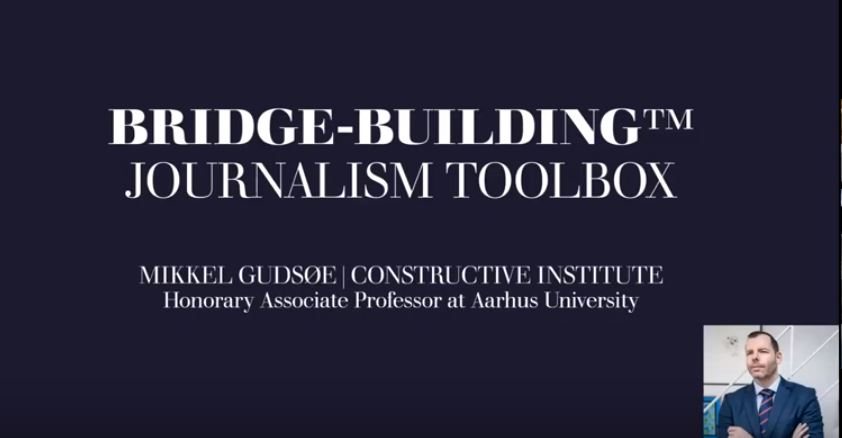Here is a short summary of Mikkel Gudsøe’s presentation and you can also watch the video.
”From the transformative mediation, we know that empowerment and recognition are very important. By enhancing the empowerment and enhancing the recognition, parties are very often much more likely to be able to accept the conflict and the situation. And/or that they want to seek out constructive solutions.
So the goal of the brigde-buiding toolbox is to help the journalists to get the parties to feel more empowered in the conversation and to have more recognition towards each other. When we are in a conflict, we are in a downward going spiral. We become more negative, destructive, we tend to alienate the other party and demonize them. In that process we ourselves become weak; we do not have the surplus energy to be able to recognize the other party.
On the other hand, once we feel comfortable, we feel empowered, we have increased recognition. Once we are there, we start to be more humanizing, more connecting, we can be more positive and constructive.
One of the three most important things a transformative mediator does is that he or she gives a reflection one-to-one, when a party has stated how they see the situation. First of all, this gives them a feeling that they have been heard, and when you feel heard, your recognition starts to increase. You also feel more empowered, that you actually have a voice.
Very often they will also lower their verbal content, they start using less conflicting wording, because they feel heard. And as they feel heard, they don’t need to use such a strong language any longer.
Then, we also use summary. The key here is that you summarize the conflict. Not all the parts where they actually agree, as you normally do in facilitative mediation, but the parts where they disagree.
Then, the third point is the check-in, where you start to ask the parties: ‘What would you like to do now?’ And leave the power and the responsibility with the parties. They have all the tools within them. But the more downward spiraling they are, the less access they have to the tools. But very often the two parties themselves will start to see where they want to go now.
All this is still work i progress, we started the work last year. Hopefully be able to provide a tool-box in the middle of 2022.”
If you are not familiar with transformative mediation, but would like to learn more, these simulation videos give you a good picture of what the elements that Gudsoe described look like in practice.
https://www.youtube.com/watch?v=E3KJY1_ZzWs
https://www.youtube.com/watch?v=l5IZTIixtQk

